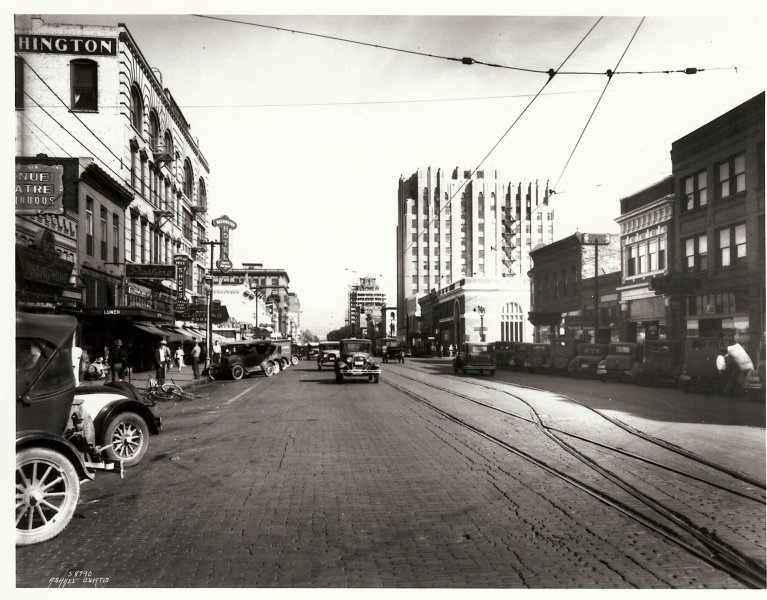Facing the truth of historical racism, or not: A look at Yakima

Dave Hanson, co-pastor of Yakima Vineyard, offers this history audit of Yakima, WA.
After the LA Riots in 1992, Manning Marable wrote a definition for racism: “a system of ignorance, exploitation, and power used to oppress African Americans, Latinos, Asians, Pacific Americans, American Indians, and other people on the basis of ethnicity, culture, mannerisms, and color.”
I offer this as a humble attempt to document some historical context from Marable’s definition, within the confines of my neighborhood.
In 1855, the Yakima Indian Reservation was formed. Not all the local tribes were satisfied or in agreement with the terms for land they were being forced to give up. Also, during the gold rush in Yakima at that time, prospectors were willfully mining on tribal land. These combined issues resulted in a three-year war. Although it was called the Yakima War, it reached Seattle, Spokane, Vancouver and beyond. The governors of Oregon and Washington Territories attacked even the neutral tribes for fear they would eventually engage with the warring tribes. Lives were tragically lost. The defeated Yakamas were forced to relocate to the Yakima Indian Reservation.
By the early 1920’s, the population within the city of Yakima had grown to 18,500. During this time, Washington State passed an Alien land law, which prohibited people permanently barred from citizenship from purchasing land. This was done initially to target Japanese immigrant farmers. But in Yakima, a significant amount of farmland was located on the Yakima reservation. The Yakama people believed their tribal sovereignty exempted them from state law. As the tribe sold parcels to Japanese farmers, angry white farmers along with anti-Japanese activists became increasingly organized. In Spring of 1923, the Ku Klux Klan came to Yakima County. Rallies began taking place throughout the county, their largest rally however included 50,000 people at the JB Vance farm on the western outskirts of Yakima.
Eventually, the Immigration Act of 1924 was put in place, but Filipinos were exempt because of the US colonization of the Philippines. They were hired at Yakima’s fruit plantations and the sharp influx being hired allowed the owners to undercut the wages of white laborers which caused further resentments. Between November 8th and 11th, 1927, there were literally riots in the streets of Yakima.
Hispanic migrant workers were being brought in with the federal government’s Bracero program to keep the farms running in Yakima during the early 30’s. They kept them running at the migrant’s expense with long hours and poor wages.
In 1930, the Yakama Indian Christian Mission was started in White Swan. These were dorms to house indigenous children so they could attend public school. The 12 boys and girls who started had grown to 17 boys and 22 girls between 1929 and 1930. Children in these early years were required to wear European styles of dress and their braids were cut off for acculturation into ‘civilized society.’
During the depression, times were tough all over. Yakima once again experienced war in the streets between field workers and ranchers. Field workers who made 10 cents per hour were picketing at one of the larger farms to work their way up to 50 cents per hour with an eight-hour day. This created numerous worker protest rallies throughout Yakima and Selah which became violent with clashing ranchers. To support the ranchers, guardsmen were brought in with 30-caliber machine guns mounted at the main intersection in Selah, and two more at Yakima Avenue and Front Streets. Tear gas and fixed bayonets were used to disperse a large crowd off Front Street on August 24, 1933.
From the days of the KKK, throughout the early 30’s, local farmers and business leaders maintained the oppression on Japanese and Filipino farmers as well as Hispanic and black workers with extremist organizations like ‘The Silver Shirts’, which included several prominent people like the county sheriff and several town police chiefs and elected officials. In 1938, a mob of 200 violently attacked a black family at their home and subsequently drove them and most other black families from Yakima.
During WWII in the early 40’s, after so long a fight, 1,017 Japanese Americans were forced to give up their homes and businesses in Yakima County and were imprisoned at Heart Mountain Relocation Center in Wyoming.
Seems we are too politically polarized to list the truth in more recent history. There was a recent effort to look at CRT in school curriculums; I thought we were going to see riots in the streets again.
The population in Yakima is now about 93,000; the county about 250,000. We’re about 49% Latino, 44% White, 6% Native, less than 1% everything else.
